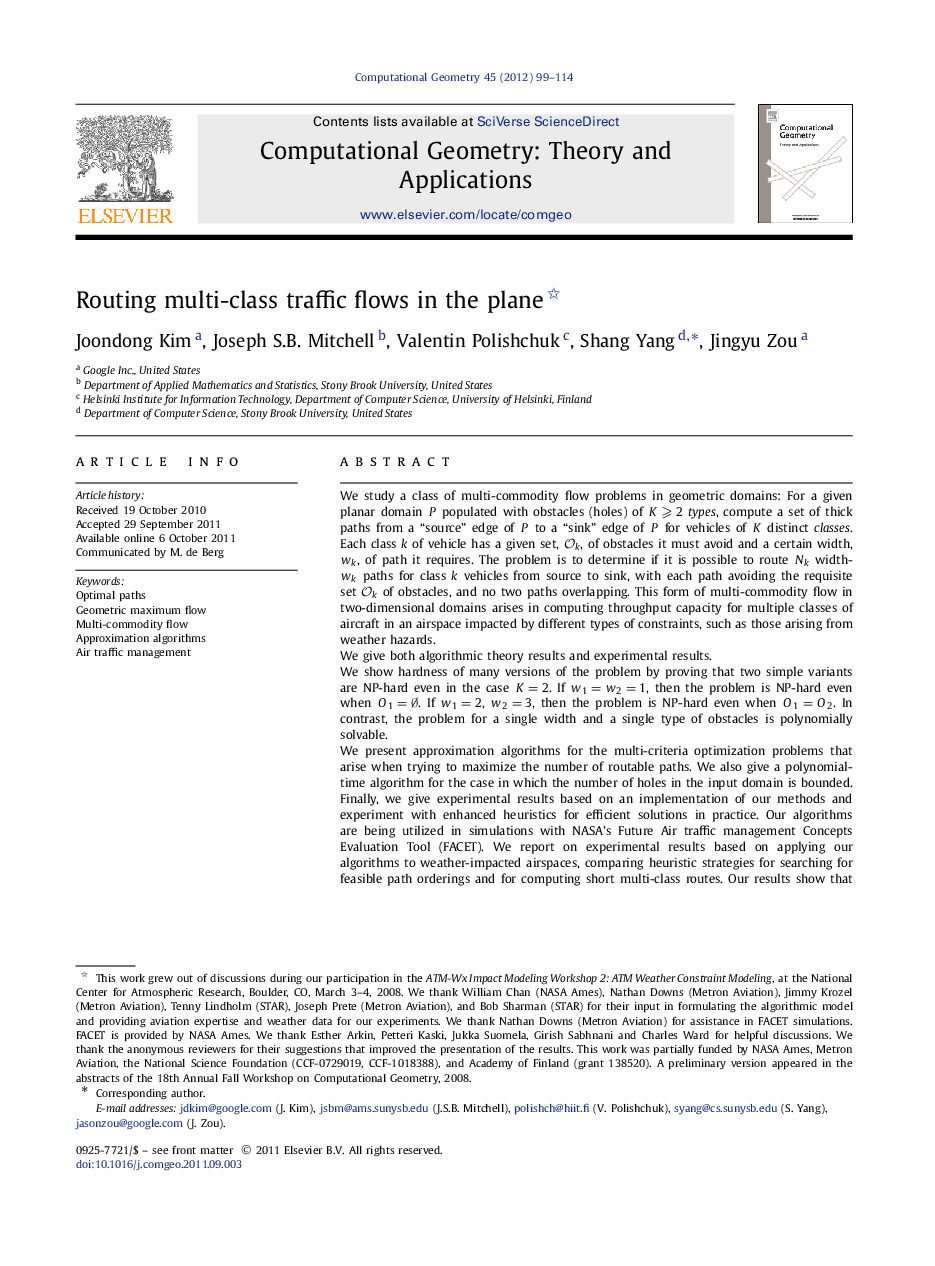| Article ID | Journal | Published Year | Pages | File Type |
|---|---|---|---|---|
| 414336 | Computational Geometry | 2012 | 16 Pages |
We study a class of multi-commodity flow problems in geometric domains: For a given planar domain P populated with obstacles (holes) of K⩾2K⩾2types, compute a set of thick paths from a “source” edge of P to a “sink” edge of P for vehicles of K distinct classes. Each class k of vehicle has a given set, OkOk, of obstacles it must avoid and a certain width, wkwk, of path it requires. The problem is to determine if it is possible to route NkNk width-wkwk paths for class k vehicles from source to sink, with each path avoiding the requisite set OkOk of obstacles, and no two paths overlapping. This form of multi-commodity flow in two-dimensional domains arises in computing throughput capacity for multiple classes of aircraft in an airspace impacted by different types of constraints, such as those arising from weather hazards.We give both algorithmic theory results and experimental results.We show hardness of many versions of the problem by proving that two simple variants are NP-hard even in the case K=2K=2. If w1=w2=1w1=w2=1, then the problem is NP-hard even when O1=∅O1=∅. If w1=2w1=2, w2=3w2=3, then the problem is NP-hard even when O1=O2O1=O2. In contrast, the problem for a single width and a single type of obstacles is polynomially solvable.We present approximation algorithms for the multi-criteria optimization problems that arise when trying to maximize the number of routable paths. We also give a polynomial-time algorithm for the case in which the number of holes in the input domain is bounded.Finally, we give experimental results based on an implementation of our methods and experiment with enhanced heuristics for efficient solutions in practice. Our algorithms are being utilized in simulations with NASAʼs Future Air traffic management Concepts Evaluation Tool (FACET). We report on experimental results based on applying our algorithms to weather-impacted airspaces, comparing heuristic strategies for searching for feasible path orderings and for computing short multi-class routes. Our results show that multi-class routes can feasibly be computed on real weather data instances on the scale required in air traffic management applications.
